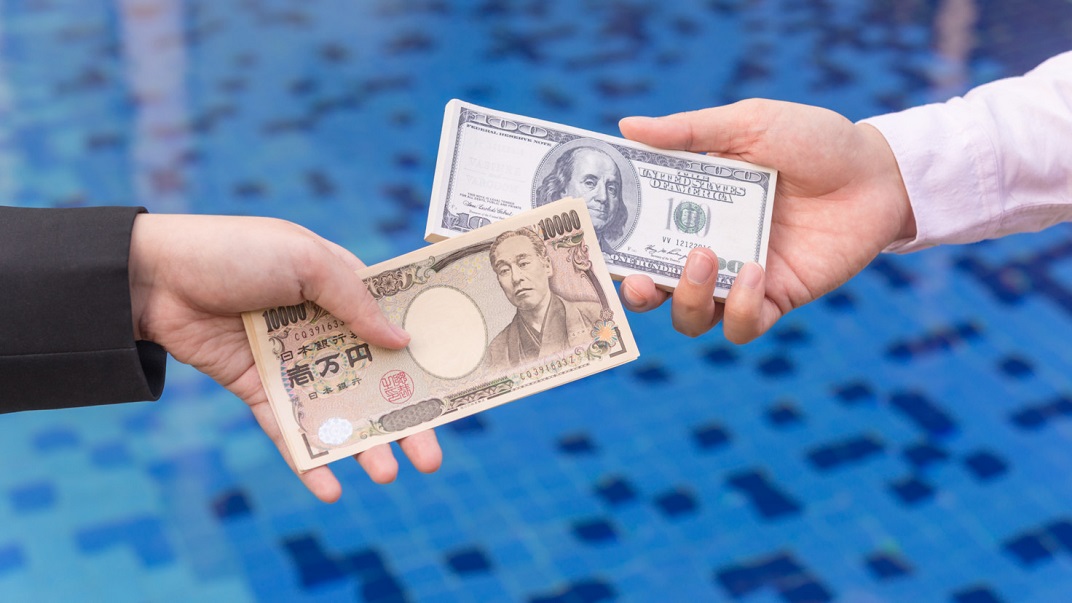Will the US dollar see the same fall as the yen?
The US dollar might spend many decades plunging in the same way as the yen has done?

The US dollar might spend many decades plunging in the same way as the yen has done?
As gold prices continue to climb, so talk of debasement rises as well. Political pressure on central banks, notably the Fed, to ease the funding burden by keeping policy rates artificially low seems to be elevating non-fiat assets like gold and crypto. But what does it mean for inflation, and what does it do to US assets like bonds and the currency? It might seem as if we’re flying blind here, as debasement has not really been a theme in the G10 before. Or has it? Steven Barrow, Head of Standard Bank G10 Strategy, argues that Japanese policymakers have essentially employed debasement for decades now.
A rise in Japan’s government debt-to-GDP ratio from around 50% in the early 1990s, when the bubble in stocks and real estate burst, to a peak of over 250% in 2020 (it is around 230% today), combined with decades of zero, or below-zero, policy rates, and BoJ ownership of over 50% of JGBs, all seem to smack of debasement. But what were the consequences for Japan, and might they be a guide as to what we might see in other countries should debt dynamics continue to spiral out of control?
One thing that did not happen was inflation; quite the contrary. This seems a bit odd. After all, if debasement is meant to be excess money printing and rate suppression to pare debt financing costs, then it seems likely that the result would be inflation. But Japanese policymakers have struggled over much of the past 30 years to lift inflation.
In other words, it seems that debasement has not worked even if it has been a surreptitious policy aim, or at least not up until recently because inflation has been low and hence the real (inflation-adjusted) amount of debt has not been inflated away. Why is this? Steven Barrow suspects it is because Japan is largely a nation of savers, which means that low policy rates – and bond yields – act as a kind of financial repression. If this is correct it might explain why another supposed consequence of debasement – currency depreciation—is the one that has worked in droves for Japan over the past 30-years, or so. It has worked in part because Japanese savers have sought higher returns abroad, which is termed the carry trade.
The purchase of foreign assets has weighed on the yen so much so that the yen’s real effective exchange rate today is only a third of what it was in 1995. That’s a truly phenomenal decline and really marks the yen out as the big currency mover in recent decades. By way of comparison, the dollar has risen by around 25% over the period, the German deutschemark/euro is down 12%, the pound is up 9% and the Swiss franc down 6%.
In short, these other major currencies have seen modest rises and falls, but it is the plunge in the yen that stands out. Now this could have been for many reasons, but the escalation of debt and its ‘financing’ by the BoJ’s hefty JGB purchases may have been a significant part of the story. If this is correct, what does it say about this debasement talk in the US? Does it mean that the US dollar might spend many decades plunging in the same way as the yen has done?
In Steven Barrow’s view, there are a number of reasons why the answer might be somewhat different. One is scale. The US is up to a debt/GDP ratio of around 100%; still significantly short of what we’ve seen in Japan. In addition, treasury ownership by the Fed is under 15% of outstanding securities, not the 50%-plus that we see in Japan. A third reason to suspect a different outcome for the dollar is that it is the world’s foremost currency in areas such as FX reserves, global lending, trade invoicing, and more. This conceivably generates a level of demand for the dollar that has not been the case with the yen.
One final point is that Japan is a nation of savers, as we mentioned earlier, and financial repression caused them to seek higher returns abroad. In contrast, the US is a nation of spenders, and hence the low rates implicit in debasement may serve to spur demand—and inflation—in a way that we did not see in Japan. “This might mean that while debasement in Japan fell wholly on the yen, not inflation, any similar debasement trend in the US will be split a little more evenly between a weaker dollar and higher inflation”, said Steven Barrow.








